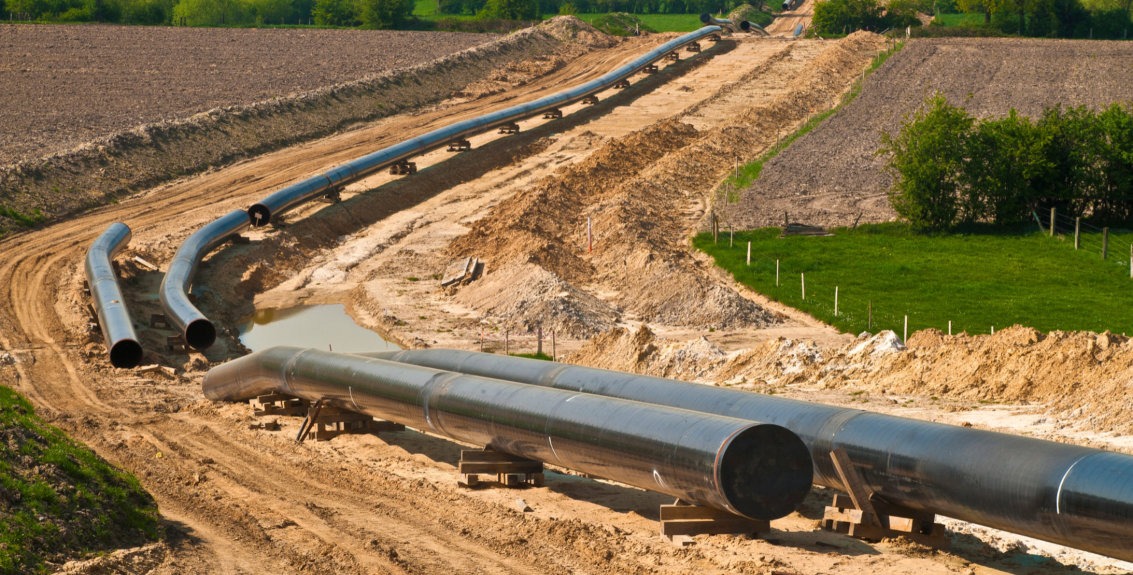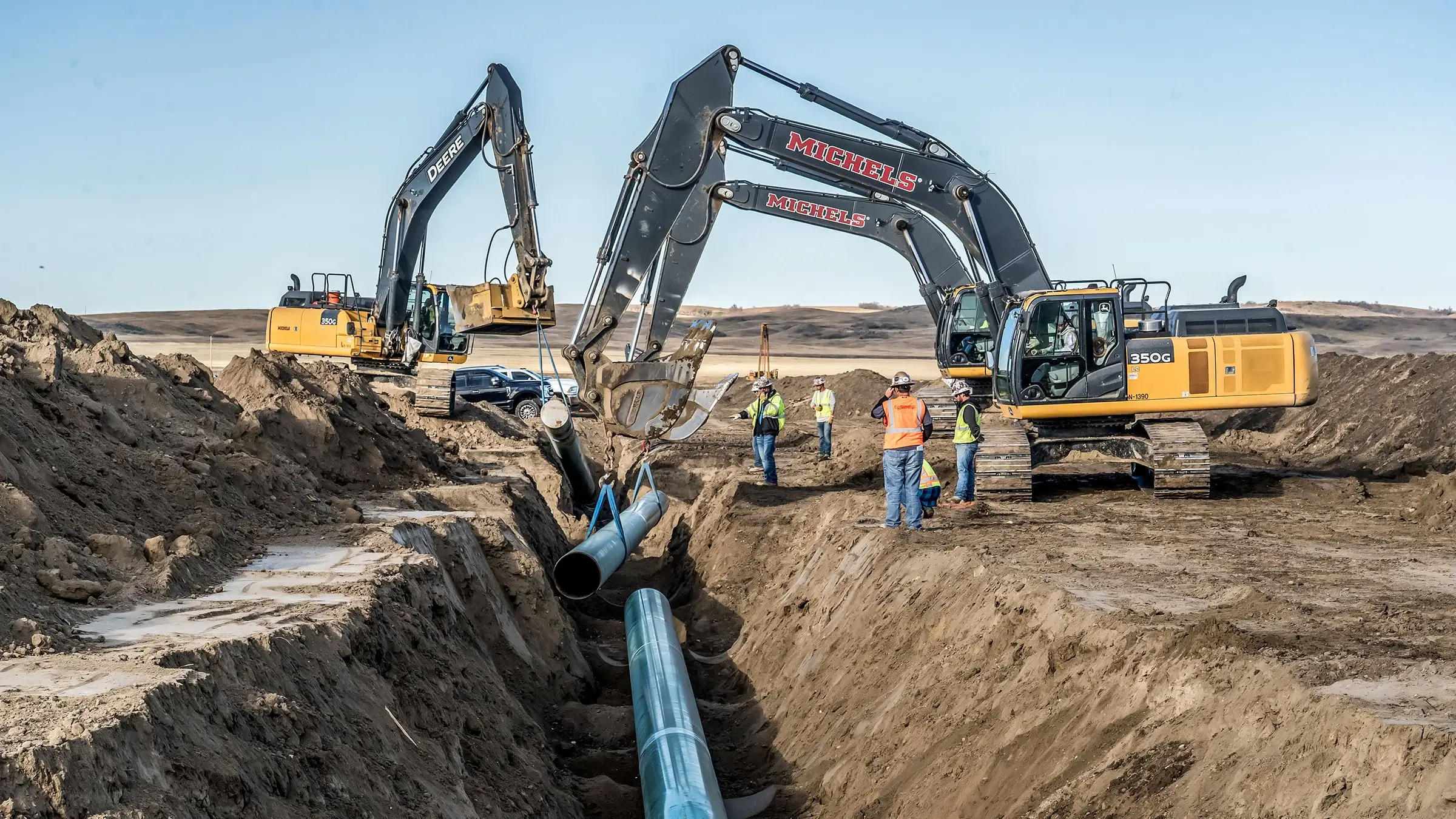Tips for Hiring the Right Provider for Creek Pipe trenching services
Recognizing the Fundamentals of Pipes Installation: What You Required to Find Out About the Refine
Proper pipe installation is vital for any pipes system. It requires cautious consideration of different aspects, including material option and adherence to neighborhood regulations. A well-planned layout can avoid problems like pressure loss, while the right devices assure efficient signing up with techniques. Also experienced installers can make typical blunders. Comprehending these fundamentals can result in a more effective and resilient system, prompting a more detailed consider the vital elements associated with the process.
Picking the Right Products for Pipe Installation
When taking into consideration pipe installation, the choice of suitable products is necessary to guaranteeing toughness and performance. Various materials are available, each offering one-of-a-kind benefits and factors to consider. For instance, PVC pipes are lightweight, resistant to corrosion, and cost-efficient, making them perfect for household pipes. Conversely, copper pipes, understood for their longevity and capability to hold up against heats, are usually liked for home heating systems.Additionally, galvanized steel pipes provide stamina and durability, ideal for durable applications, although they are vulnerable to corrosion over time.For underground setups, polyethylene pipelines are preferred because of their flexibility and resistance to stress and anxiety cracking. Correct product selection relies on the certain needs of the project, consisting of pressure rankings, temperature variants, and the chemical nature of the fluids being transferred - Creek Pipe near me. Inevitably, informed selections concerning pipe materials add greatly to the total success and long life of pipes systems
Understanding Local Building Regulations and Laws
How can understanding local building regulations and policies effect pipe installation? Experience with these codes is essential for guaranteeing that pipe setups are risk-free, compliant, and reliable. Local building ordinance describe details requirements relating to products, installation methods, and precaution, which should be followed in order to stay clear of possible lawful concerns and costly fines.Failure to abide can lead to evaluations being stopped working, delays in project completion, and even mandated removal of improperly installed pipelines. On top of that, recognizing zoning regulations and guidelines can affect the kind of materials permitted, in addition to the methods made use of for installation.Contractors and home owners alike must spend time in evaluating regional regulations prior to commencing any type of installation project. This aggressive strategy not only promotes safety yet likewise enhances the overall top quality and toughness of the pipes system, ultimately fostering lasting capability and satisfaction.
Planning Your Pipe Layout and Layout
Appropriate preparation of pipe design and layout is vital for attaining a reliable plumbing system. This procedure begins with evaluating the certain needs of the space, taking into consideration the area of fixtures and home appliances. Precise dimensions ensure that pipes are effectively routed, reducing bends and transforms that can cause push loss.Consideration of the circulation rates and the kinds of materials made use of is vital, as various materials have differing longevity and compatibility with plumbing systems. In addition, the designer must make up future expansions or adjustments to the design, permitting versatility in situation of renovations.Efficient water drainage and ventilation are additionally considerable parts of the style, as they prevent obstructions and guarantee correct waste removal. Partnership with neighborhood building codes ensures compliance and safety, which is vital in any kind of pipes installation job.
Crucial Tools and Devices for Installation
Successful pipe installation pivots on having the right devices and tools handy. Crucial devices consist of pipe cutters for tidy cuts, wrenches for tightening up installations, and pliers for clutching and turning pipes. Furthermore, a level assurances pipelines are mounted evenly, while a measuring tape aids in attaining exact lengths.For specific products, a welding torch may be needed for copper pipelines, while a PVC cutter is important for plastic alternatives. Safety equipment, such as handwear covers and safety glasses, safeguards installers from prospective risks during the process.A pipe bender can be particularly useful for developing smooth contours without compromising stability, while a torque wrench assurances that connections are safeguarded to the maker's specifications.Having these tools readily available not just helps with a smoother installation process yet additionally adds to the general sturdiness and functionality of the plumbing system. Proper tools is vital in achieving durable outcomes.
Methods for Proper Pipe Signing Up With and Sealing
Accomplishing a safe and leak-free connection in between pipes calls for careful attention to signing up with and sealing strategies. Various techniques exist, each matched to various pipe materials and applications (Creek Pipe contact). As an example, welding is commonly utilized for metal pipelines, making certain durable links through warm blend. In comparison, plastic pipelines benefit from solvent concrete or blend welding, creating strong, permanent bonds.Threaded links are usual in both metal and plastic piping, needing exact alignment and making use of ideal sealants, such as Teflon tape or pipe dope, to avoid leakages. Compression fittings use an additional choice, where mechanical stress secures the pipes together, making them quickly took apart for maintenance.Regardless of the method picked, appropriate prep work is crucial. This consists of cleaning pipe ends and ensuring they are without particles. Applying these methods diligently will boost the longevity and reliability of the pipe system, ultimately contributing to its effective performance
Typical Errors to Stay Clear Of Throughout Installation
Throughout pipe installation, staying clear of usual errors is important for making certain a reputable and effective system. One frequent mistake is stopping working to measure and cut pipes precisely, which can cause incorrect fittings and leakages. In addition, ignoring to check the compatibility of materials can lead to rust or other damages with time. Improperly protecting joints and connections can likewise create powerlessness in the system, creating prospective failures.Another typical mistake is overlooking the relevance of incline and drain; pipes have to be set up at the proper angle to promote appropriate flow. Poor support for pipes can result in sagging and stress and anxiety, affecting the stability of the system. Eventually, ignoring neighborhood codes and guidelines can lead to costly rework and safety hazards. By knowing these pitfalls, installers can considerably boost the toughness and performance of pipe systems.
Maintenance Tips for Durable Pipe Systems
To ensure the long life of pipe systems, routine assessments and cleansing are vital methods. These steps aid determine potential problems before they escalate right into major problems. In addition, employing appropriate insulation methods can further safeguard pipes from temperature changes and environmental variables.
Regular Assessments and Cleansing
Regular inspections and cleaning are necessary for keeping the longevity and effectiveness of pipe systems. Regularly examining pipes for signs of rust, leaks, or obstructions can help identify prospective problems before they escalate right into costly repairs. Cleaning up pipelines occasionally removes accumulation that can limit flow More Bonuses and advertise deterioration. It is recommended to arrange assessments at the very least when a year, yet much more constant checks might be essential in high-usage atmospheres. Making use of expert services for comprehensive cleaning warranties that all particles is efficiently gotten rid of. In addition, maintaining records of inspections and upkeep activities aids in tracking the system's health and wellness gradually - Creek Pipe trenching services. By focusing on these techniques, homeowner can improve the integrity and lifespan of their pipe systems
Appropriate Insulation Strategies
Efficient insulation techniques play a necessary duty in keeping the efficiency and long life of pipe systems. Proper insulation lessens warmth loss in hot water pipes and prevents cold in cold water pipes, considerably minimizing energy expenses and possible damages. Common materials made use of for insulation include fiberglass, foam, and rubber, each offering varying levels look at this website of thermal resistance. It is crucial to guarantee that insulation is applied consistently, covering all revealed locations without gaps. Furthermore, safeguarding insulation with appropriate fasteners helps preserve its placement and effectiveness in time. Normal examinations need to be carried out to determine deterioration, ensuring timely replacements. By applying these strategies, pipe systems can operate effectively and have a prolonged service life, eventually profiting both the setting and the homeowner.

Regularly Asked Questions
How Do I Determine the Appropriate Pipe Size for My Project?
Figuring out the appropriate pipe size entails reviewing the task's flow demands, pressure requirements, and the kind of fluid being transferred. Consulting style standards and carrying out computations guarantees perfect efficiency and effectiveness in the installation process.
What Are the Ecological Influences of Different Pipe Products?

Can I Install Pipes Myself or Should I Employ a Specialist?
The concern of whether to install pipes individually or employ an expert typically depends upon the individual's ability degree and project intricacy. An expert may assure compliance with regulations and decrease potential lasting problems.

The Length Of Time Can I Anticipate My Pipe Installation to Last?
The long life of pipe installation varies substantially, typically lasting 20 to 100 years, relying on products, installation quality, and upkeep. Regular evaluations and proper treatment can enhance longevity and avoid have a peek at these guys premature failings.

What Are the Indications of a Failing Pipe System?
Signs of a failing pipe system consist of constant leaks, unusual water stress modifications, stained water, mold development, and consistent moisture. Property owners should check these signs to avoid costly damages and assurance prompt repair services are made.